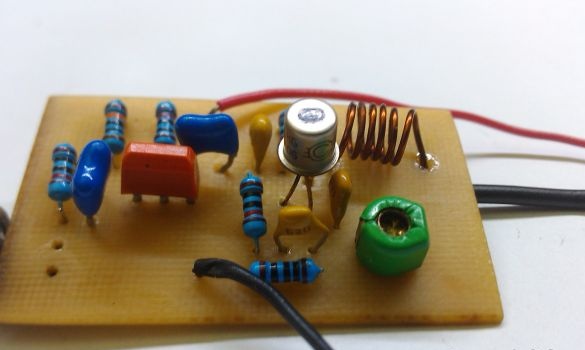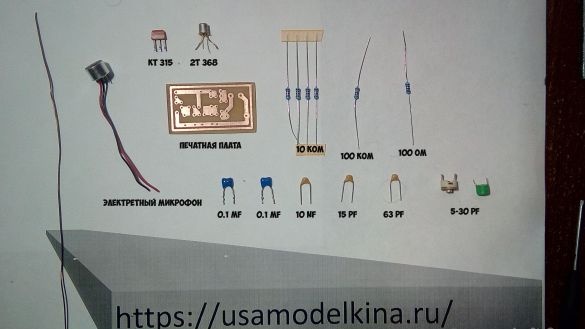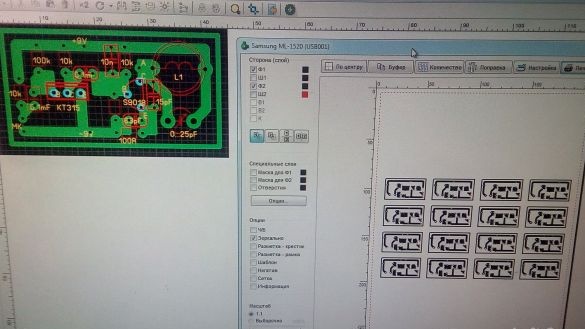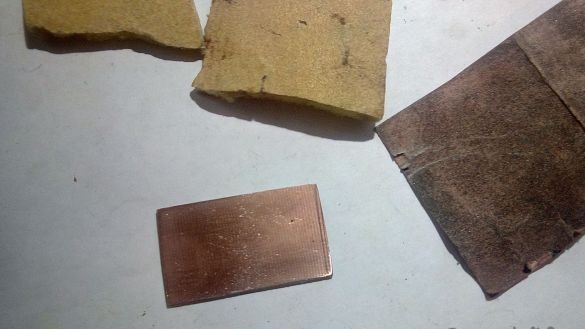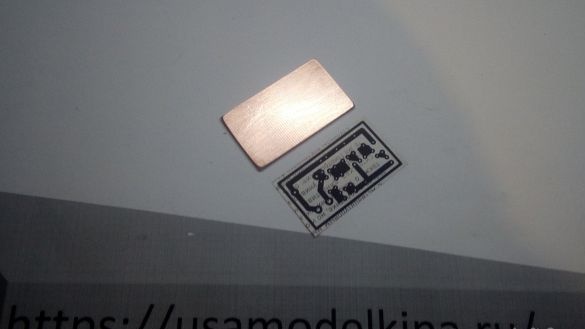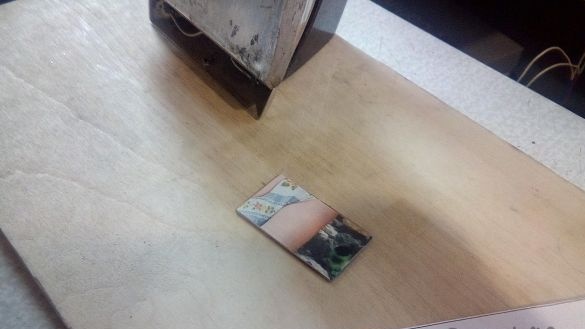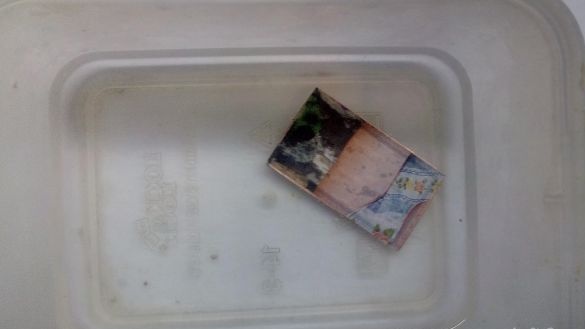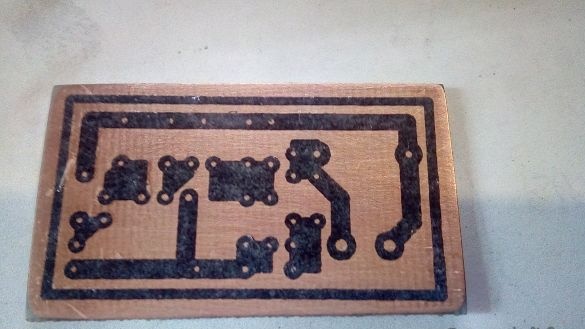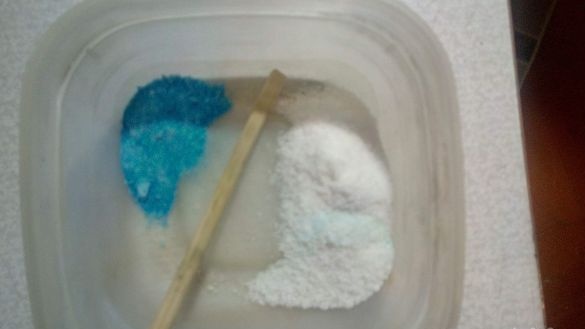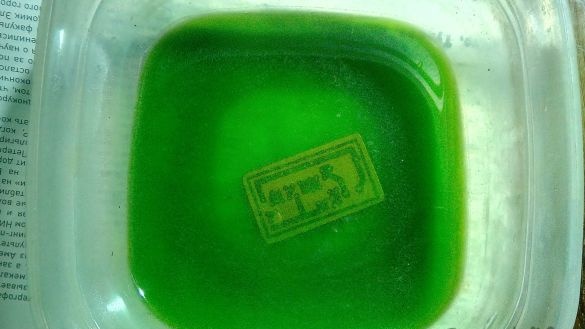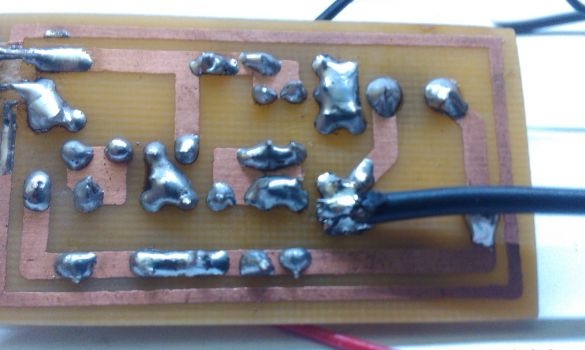It was required to make a radio microphone for voice recording, for dubbing a video clip at a short distance.
The choice fell on the standard "three-point capacitive" circuit.
Having spent some time searching for a circuit, a pretty good and stable option was found.
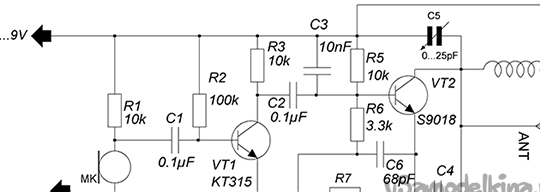
To translate the scheme into reality I needed:
1) Transistors CT 315, CT 368
2) Resistors 100 kOhm, 10 kOhm (4 pcs), 100 ohm
3) Capacitors 0.1 mf (2 pcs), 10 nf, 15 pf, 63pf, 5-30 pf (Trimmer)
4) The coil contains 6 turns of wire 0.6-0.8 on the frame 4.5-5 mm
5) Electron microphone
6) Textolite, sandpaper, copper sulfate, salt.
with a printed circuit board, open in SprintLayout and print.
We prepare the template for further shamanism ...........
After you have prepared the template, we will take up the preparation of the PCB to obtain a high-quality printed circuit board
first wash, then skim, and wash again.
As a result, we get this result
Now it came to transferring the drawing to textolite, for which we need an iron and a flat one (preferably a wooden surface, I recommend ironing from 15 to 45 seconds. At the same time, pressing and warming the entire board well.
Next, let the board cool down and only after that dip it in a container of water for 2-5 minutes to soften the paper template.
After removing the excess with a quality transfer of the picture, it should turn out like this
If all these operations are successful, we proceed to etching the board.
For etching, copper sulfate must be mixed with table salt, in a ratio of 1/3 of vitriol and 2/3 of salt.
Pour boiling water, mix and lower our board
After etching, I wash the circuit board from the remaining toner and drill.
Next, we collect and get an almost finished product, it remains only to set up a little
To configure, we need a receiver and an RF field indicator that can be assembled according to the scheme below
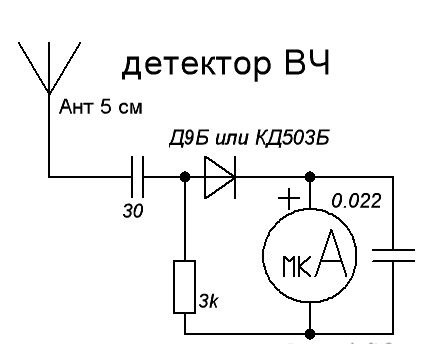
I used an SDR receiver and a homemade RF / microwave field indicator for tuning.
Work video


